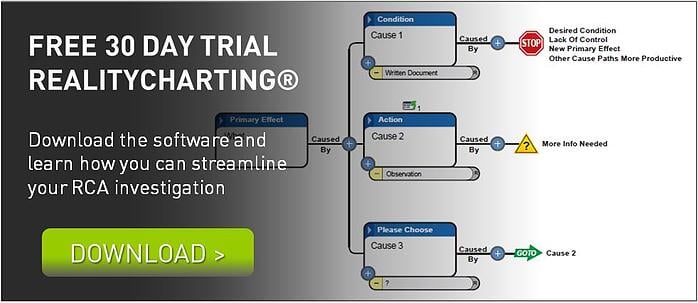By Jack Jager 
Giving the right name to your problem – in other words, defining it clearly – is the first step towards fixing it.
The naming of a problem before you actually start investigating it is a critical first step. It gives the investigation a clear purpose, a clear starting point and a clear direction.
Think about it. If you can’t define your problem clearly, then how do you know if the solutions proposed in the investigation will actually prevent its reoccurrence? How will you know if you have achieved what you set out to do?
Not only that, but a clearly defined problem is essential for when you present your initial report on the investigation. You need a strong name for the problem to catch the reader’s attention and make it very clear what the report is setting out to solve. You need management to buy-in into your problem to secure the time and resources needed to conduct a more comprehensive analysis. A strong title is always the first step.
What makes a good name?
The name of the problem needs to be short and concise. It should have impact. It should avoid the use of generic or ambiguous language.
For example, a “Failed bearing” is generic in its description. The title is vague – I know I have a problem with the bearing, but I don’t really know what sort of problem it is. A generic heading opens the door to many different possibilities. If you ask yourself why you have a “failed” bearing, many new questions and options arise resulting from the many different failure modes that are possible. This is not really what you want.
Rather, you should convey the understanding that the particular failure of the bearing is a unique, single incident in its own right. It has specific causes. And it needs a specific name.
Root cause analysis vs failure modes effects analysis
What are you trying to do with your investigation? Are you performing a “failure modes effects” analysis, or a “root cause analysis” on a very specific issue? If it is the latter, then the language you use needs to reflect this. It needs to be specific.
If the problem’s causes are unknown when you first start an investigation, then an understanding of all possible failure modes has some merit. It’s a good place to start, as it will help to point you in the right direction. However, keep in mind that it’s a starting point only. Once you have found the evidence to determine which cause path needs to be pursued, your investigation should become very specific, with all alternative pathways eliminated.
Think about a generic problem title: “person injured”. To make it more specific, we ask “What is the injury?” The response tells us that the person received “second degree burns to left forearm”. This more specific title immediately conveys how serious the problem is, and also generates far more specific questions in the analysis of the incident. In turn, this leads to more precise responses and a better understanding of the issue.
Streamlining your cause and effect chart
A more specific and clear problem name will also make your cause and effect chart more specific. It will become more streamlined, with fewer possible cause path options and “OR” scenarios.
Going back to the earlier example, if you say that the problem is a “Failed bearing”, you will likely get responses like “That’s normal. It happens all the time.”
But if you call the problem: “Conveyor offline” (because of a failed bearing) then what sort of response do you get?
Or if you were to describe the problem as: “Can’t load the train” (because the conveyor is offline) what reaction would you get? Again, the response is likely to be ramped up even further.
The fundamental problem – a failed bearing – is still the same. The three ways to name the problem show how the events are connected, yet sit in different positions on the time continuum. Each is a possible starting point, but which one will give you the biggest buy-in factor?
You may want to choose the most significant event as your starting point, as this will surely obtain greater buy-in.
If unsure of where to start, try using a “so what” question to guide you – “So what if the bearing fails? What’s the impact?”
This may tell you: “Conveyor is stopped.” So what? What’s the impact of the conveyor stopping?
“Cant load the train.”
In this scenario, this last issue – an inability to load the train – is arguably the best starting point as it will gain far more buy-in from people further up the chain of command, and hence be more likely to secure funding and resources.
All because of a name
When choosing an appropriate starting point for your investigation, consider your options carefully and then assign a name that will clearly articulate the problem you intend to solve – one that also echoes the significance of the problem itself.
Further food for thought
Remember: You are never wrong when choosing a starting point as all causes are related. They are simply at different points in the timeline. Your choice may reflect your role or responsibility within the company.


